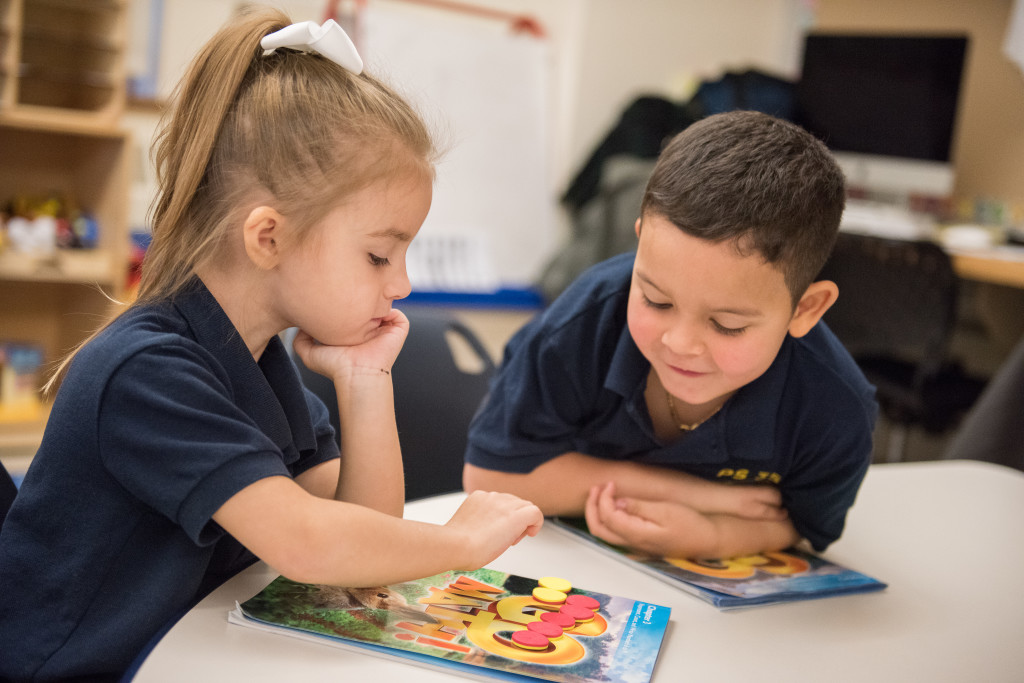7 Things Growth Mindset is Not
By Catherine Good, Ph.D., Senior Research Scientist and Turnaround staff
At Turnaround for Children, we recognize growth mindset as one of the Building Blocks for Learning that paves the way for academic success. Turnaround is hardly alone in recognizing the importance of growth mindset; Carol Dweck’s pioneering research has drawn the attention of educators nationwide.
But like any popular concept, growth mindset risks becoming a victim of its own success. If stretched and misapplied, it risks losing meaning and becoming cliché, instead of a powerful insight for students and educators.
Growth mindset is not:
- …the power of positive thinking. Someone with a growth mindset understands the biological fact that our efforts and strategies have the potential to physically change our brains, growing and strengthening the neural connections that make us, literally, smarter. It’s not about wishing or hoping for a problem to improve on its own.
- …only about effort. Internalizing a growth mindset helps students embrace effort and productive persistence as one of the many tools they can bring to their learning experiences. Students recognize that their strategies and engagement with learning are the path to success, rather than signs of low intelligence. But directing students to simply “try harder” in the face of difficulty does not foster a growth mindset, nor does it motivate students, many of whom need help and guidance about how to be most effective in their efforts.
- …only praising effort. It’s true that teacher feedback matters a lot, and the type of praise we give is a form of feedback. Unfortunately, praise such as, “You’re so smart” can actually reinforce a fixed mindset. But does praise such as “Nice try!” reinforce a growth mindset? No. Praising effort for effort’s sake is not the same thing as a growth mindset. Instead, celebrate your students’ successes by applauding their hard work and growth, and encourage students to keep trying by helping them find new strategies and approaches when they are struggling.
- …about celebrating mistakes. Students need to know how they can learn from mistakes and that EVERYONE, including even the most “naturally talented” made and still makes mistakes. But taking the sting out of mistakes is just the first step. The next step is to help students identify their misconceptions and errors and give them strategies to do better next time.
- …a way to blame students. If you find yourself saying, “These students would be fine if they only had a growth mindset,” you’re doing it wrong. There are a variety of reasons students may struggle – many of which may have more to do with our own pedagogy than our students’ mindsets. Fostering a growth mindset can open students to realizing their potential, but they need good instruction, good curriculum and supportive classroom communities in order to reap the benefits of their growth mindsets.
- …only for low-achieving students. High-achieving students may hold a fixed mindset about intelligence, seeing their success as validation of their “natural” abilities. That’s not a problem… until they aren’t high-achieving anymore. Think about transitioning from high school to that first year of college. Everybody struggles eventually, but how students react to that experience can make all the difference.
- …only about students. Yes, whether or not your students have a growth mindset can impact their academic success, but your own mindset as a teacher is also important! It can impact everything from the way you run classroom discussions to the way you track academic progress. So make sure you are reflecting on your own classroom discourse and practices that can either help or hinder the development of a hardy growth mindset.
These are some of the most common misconceptions we frequently hear about growth mindset, but we recognize we’re just scratching the surface. What other misunderstandings have you come across? Please share your thoughts on Twitter or via email.


Share This Story